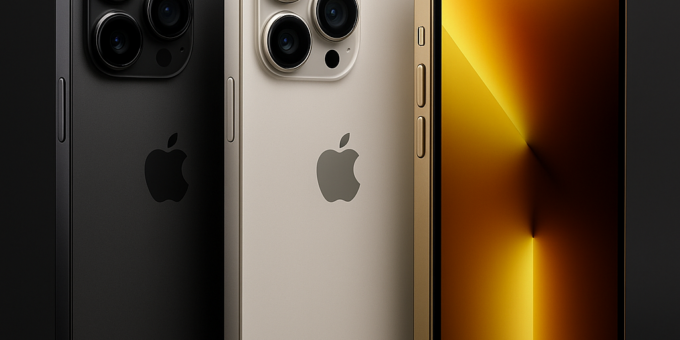
Apple Inc., a company that started in a garage, transformed the digital world with its relentless pursuit of design elegance and technical excellence. At the core of Apple’s technological revolution lies the iPhone—a device that not only redefined smartphones but changed how we interact with the digital universe. From its revolutionary inception in 2007 to its AI-infused future, the evolution of Apple smartphones is a story of breakthroughs, courage, and constant reinvention.
Introduction to the Apple Smartphone Revolution
When Apple unveiled the first iPhone in 2007, the world didn’t just get a new phone—it was handed the future. Combining an iPod, a phone, and an Internet communicator, Steve Jobs made it clear: the rules had changed. The evolution of Apple smartphones isn’t just about hardware—it’s about a philosophy. Innovation wasn’t an option—it was the mission.
The Birth of the iPhone: 2007’s Game Changer
Back in 2007, mobile phones had physical keyboards, resistive touchscreens, and clunky interfaces. The original iPhone changed all of that with a sleek glass display and multitouch functionality. It was minimal, elegant, and surprisingly intuitive. No stylus, no buttons, just you and your fingers. This wasn’t just a phone—it was the start of a mobile revolution.
The iPhone 3G and App Store: Creating a Mobile Ecosystem
If the original iPhone was the spark, the iPhone 3G poured gasoline on the flame. Released in 2008, it introduced 3G internet speeds and the App Store, creating a thriving ecosystem for developers. Now users could customize their phones with applications, games, and utilities. Apple was no longer just a hardware company—it was a platform.
iPhone 3GS: Speed as a Selling Point
For the first time, Apple marketed speed. The “S” in 3GS stood for speed—and rightly so. With a better processor and improved camera, this model set the trend of annual updates and performance improvements that continues today.
Retina Revolution: The iPhone 4 Breakthrough
In 2010, the iPhone 4 brought a massive leap in display quality with its Retina display. Boasting 326 pixels per inch, text and images looked sharper than ever. It also introduced FaceTime and the now-iconic glass and stainless steel design—sleek yet durable.
Siri and Voice Tech: iPhone 4S Innovation
Siri’s introduction in 2011 gave iPhones a voice—and a personality. This voice assistant wasn’t perfect, but it laid the groundwork for AI integration in smartphones. It also marked the end of Steve Jobs’ era, with his passing just one day after the iPhone 4S announcement.
Bigger and Bolder: The iPhone 5 and Lightning Connector
In 2012, the iPhone 5 broke the mold with a 4-inch screen and a thinner design. The introduction of the Lightning connector signaled Apple’s willingness to push its ecosystem forward, even if it meant breaking compatibility with older accessories.
Touch ID Debuts: iPhone 5S and Mobile Security
The 5S was revolutionary for one main reason: Touch ID. Biometric security became mainstream. Unlocking your phone with a fingerprint wasn’t just cool—it was futuristic. It also introduced the 64-bit A7 chip, making iPhones as powerful as some desktops.
The Budget Move: iPhone 5C’s Impact on Market Penetration
Colorful, playful, and more affordable, the iPhone 5C allowed Apple to reach new markets. Though often criticized, it set a precedent for Apple offering varied price points—something continued today with models like the iPhone SE.
iPhone 6 and 6 Plus: Phablet Era Begins
The 2014 models responded to the market’s demand for larger displays. The iPhone 6 and 6 Plus not only boosted screen sizes to 4.7 and 5.5 inches respectively but also brought Apple Pay, initiating mobile wallet adoption worldwide.
iPhone 6S: 3D Touch and Real-Time Photos
Innovation ramped up with 3D Touch—a pressure-sensitive screen allowing new gestures. Live Photos added movement to memories, bridging the gap between images and video. The A9 chip inside brought blazing speeds and increased efficiency.
The Courage to Change: iPhone 7 and Headphone Jack Removal
2016’s iPhone 7 stirred controversy with the removal of the 3.5mm headphone jack. Apple claimed “courage”—and though divisive, it pushed wireless audio forward. It also introduced water resistance and a dual-lens camera in the Plus model.
iPhone 8 and Wireless Charging
While visually similar to its predecessor, the iPhone 8 introduced wireless charging and the powerful A11 Bionic chip. It served as the calm before the storm of the iPhone X.
iPhone X: Face ID and Edge-to-Edge Display
Marking a decade since the original, iPhone X delivered major changes: OLED edge-to-edge screen, no home button, and Face ID. This model redefined what an iPhone looked and felt like, pushing the entire industry toward gesture-based UI.
A12 Bionic and iPhone XS: Powering the Future
Machine learning became central with the A12 chip. The iPhone XS and XS Max refined the X’s innovations, offering smarter processing, better photography, and extended battery life. Subtle but significant, this phase was all about polish.
iPhone 11 Series: Ultra-Wide Camera and Night Mode
2019’s iPhone 11 line proved that Apple listens. The standard model was more affordable, the cameras improved significantly (especially in low light), and the battery life impressed. The Pro series catered to power users and creatives alike.
5G Arrives: iPhone 12’s Speed Revolution
2020 introduced 5G support, ceramic shield glass, and MagSafe charging. Flat-edge design returned, reminiscent of the iPhone 4. The entire lineup, from mini to Pro Max, was a masterclass in choice and power.
Design Returns to Form: iPhone 12 and Flat Edges
Fans of older designs rejoiced. The angular, premium feel of the iPhone 12 set it apart in a world of rounded phones. Paired with stunning OLED displays across all models, it felt like a reinvention.
Environmental Focus: iPhone 12 Packaging Shift
Apple’s decision to remove chargers and EarPods from the box was met with skepticism, but it was part of a larger sustainability strategy. Smaller packaging, fewer emissions, and greener goals became part of the brand’s identity.
ProRAW and Cinematic Mode: iPhone 13 Features
Apple took creativity seriously with ProRAW for photographers and Cinematic Mode for filmmakers. These weren’t gimmicks—they were genuine tools, helping iPhones become professional devices in the hands of everyday users.
iPhone 14 and Emergency SOS via Satellite
Connectivity became life-saving with Emergency SOS via satellite. This innovation meant you could contact help even without cell service—an extraordinary blend of tech and safety.
The Dynamic Island: iPhone 14 Pro UX Breakthrough
Dynamic Island turned the notch into something useful, not just tolerable. It reimagined UI/UX, letting users interact with notifications and apps more fluidly than ever before.
iPhone 15 Series: USB-C and Titanium Builds
Complying with global standards, Apple transitioned to USB-C in 2023. The Pro models also shifted to lightweight, strong titanium frames. Efficiency, speed, and style converged beautifully in the 15 series.
AI and Neural Engines in Apple Phones
Apple’s neural engines now perform trillions of operations per second. From on-device voice recognition to smarter photos and real-time language translation, artificial intelligence is at the heart of every modern iPhone.
iOS Evolution: Software Enhancements Over Time
Hardware matters, but software shines. Over the years, iOS has matured from a simple interface to a robust operating system with features like widgets, app tracking transparency, and more. It evolves hand-in-hand with the hardware.
Security and Privacy Focus in iPhone Updates
Apple distinguishes itself by championing privacy. App permissions, email masking, and encryption are just a few ways Apple builds trust and protects users in an increasingly surveilled world.
Camera Wars: Competing Through Lenses
Apple continues to lead the smartphone photography race with every iteration. Night mode, LiDAR scanning, sensor-shift stabilization, and computational photography make iPhones the camera of choice for many pros and enthusiasts alike.
Battery Life and Charging Innovation
From 5W charging to 20W fast charging and wireless MagSafe, Apple has steadily improved endurance and convenience. Battery health management tools ensure longevity and reliability.
AR and VR Integration in Recent iPhones
ARKit made iPhones a gateway to augmented reality, paving the way for future devices like Apple Vision Pro. From room scanning to immersive apps, AR is more than a novelty—it’s a promise.
iPhones as Creative Tools: Music, Video, and Art
Whether you’re producing chart-topping music or editing a 4K film, iPhones offer tools once reserved for studios. Their portability, power, and precision make them ideal for creators on the go.
Future Outlook: What’s Next for Apple Smartphones?
Rumors suggest foldable iPhones, AI co-pilots, and deeper integration with Apple Vision Pro. As Apple continues to innovate, one thing is clear: the iPhone isn’t just a phone. It’s a platform for the future.
You Can Also Read : Must-Have Amazon Finds for the Latest High-End Luxury Cars
FAQs
What was the first iPhone released by Apple?
The first iPhone was launched on June 29, 2007, combining a phone, iPod, and internet device.
When did Apple introduce 5G support in iPhones?
Apple introduced 5G connectivity with the iPhone 12 series in 2020.
Which iPhone introduced Face ID?
Face ID was first introduced with the iPhone X in 2017.
Why did Apple remove the headphone jack?
Apple removed the 3.5mm headphone jack with the iPhone 7 in 2016 to improve water resistance and encourage wireless audio adoption.
What is the Dynamic Island?
Dynamic Island, introduced in iPhone 14 Pro, is a UI feature that blends hardware and software to display alerts and activities interactively.
Which iPhone has the best camera?
As of 2025, the iPhone 15 Pro Max is widely regarded as having Apple’s most advanced camera system.
